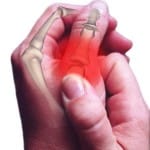Osteoarthritis in younger patients is a source of discomfort and misery, often due to the fact that it prevents and hinders an otherwise healthy individual taking part in activities they might usually enjoy. Osteoarthritis , which affects approximately 400,000 people in Ireland, develops when cartilage coating bones wears away, allowing them to grind against each other.
However, a new procedure that involves cementing metal to the damaged parts of the knee is enabling many younger sufferers to undergo a partial knee replacement surgery which does not carry any of the usual negative side effects that are associated with traditional joint replacement, such as reduced mobility or months of painstaking rehabilitation.

Artificial knee joints can be effective but they have a more limited range of movement than the natural knee joint. Joint replacements for younger people are rare and younger patients are often advised to reduce their activity until the wear had spread throughout the joint and then would be offered a complete knee replacement.
However, this new surgical technique targets only the affected and damaged areas of the knee rather than completely replacing the whole joint and it gives greater mobility compared with traditional replacement joints. The procedure involves first identifying the areas of cartilage that have become worn down. Then, under general anaesthetic, a small incision 3.5in wide is made on the inside of the knee, the rough sections are filed down and a thin shell is put in place to cover the affected part of the knee.
Most patients can get up and walk the same day and can usually go home after a few days. This treatment means more of the original joint is conserved, none of the ligaments around or inside the knee are disturbed and the plastic insert can be renewed, or further compartments or areas of the knee can be resurfaced if the arthritis begins to affect other parts of the joint.
Physiotherapy can help improve muscle strength and the motion of stiff joints, as well as your sense of balance. Therapists have many techniques for treating Osteoarthritis. Massage therapy may also help provide short-term pain relief. Make sure you work with an experienced massage therapist who understands how to work with sensitive joint areas, such as those which are affected by Osteoarthritis. Chartered Physiotherapists use a wide range of treatments for arthritic patients depending on the type of arthritis and its severity.
For information on our treatments see our arthritis page under injuries & conditions. To make an appointment click here.











